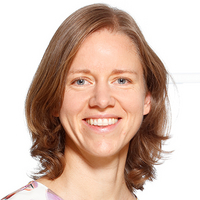Institute of Molecular Biology (IMB)
Roopesh Anand Joan Barau Petra Beli Ulrich Hohmann Claudia Keller Valsecchi René Ketting Anton Khmelinskii Julian König Katja Luck Laura Lorenzo-Orts Christof Niehrs Jan Padeken Stamatis Papathanasiou Katharina Papsdorf Sandra Schick Helle Ulrich Siyao Wang Sina WittmannIntegrative systems biology
Proteins mediate cellular function by interacting with other proteins. The human genome contains tens of thousands of genes, which in turn come in hundreds of thousands of protein-coding variants, some of which can modify protein-protein interactions and result in disease. Furthermore, these interactions vary among different cell types, giving rise to diseases that affect specific tissues.
My research combines computational with experimental methods to predict and characterise the protein-protein interactions and mutations that cause neurodevelopmental disorders (NDDs). I use existing and/or generate new data on protein-protein interactions, their interfaces, brain-related gene expression, and human genetic variants that are associated with NDDs. Employing integrative system-wide protein interaction network analyses, I work to identify molecular mechanisms that underlie brain-specific functions of chromatin remodelling, DNA repair, and transcriptional regulation.
Positions held
- Since 2020: Emmy Noether Group Leader, Institute of Molecular Biology (IMB), Mainz
- 2013 - 2019: Postdoctoral Fellow, Dana-Farber Cancer Institute and Harvard Medical School, USA
- 2007 - 2008: Research Assistant, EMBL, Heidelberg
Education
- 2012: PhD in Bioinformatics, University of Strasbourg
- 2007: Diploma in Bioinformatics, Friedrich Schiller University Jena
- 2004: Vordiploma in Bioinformatics, Friedrich Schiller University Jena
Funding
I am a fellow of the DFG’s Emmy Noether Program for young investigators, who have granted me €1.6m in funding to support my research ambitions for the coming 6 years. These funds are topped up with IMB core funding.
Selected publications by Katja Luck
Luck K*, Kim DK*, Lambourne L*, Spirohn K* … Hill DE#, Vidal M#, Roth FP# and Calderwood MA# (2020) A reference map of the human binary protein interactome. Nature, 580:402–408 (*indicates joint contribution, #indicates joint correspondence) Link
Choi SG*, Olivet J*, Cassonnet P*, Vidalain PO*, Luck K, Lambourne L, Spirohn K, Lemmens I, Santos MD, Demeret C, Jones L, Rangarajan S, Bian W, Coutant EP, Janin YL, Werf SVD, Rivas JDL, Tavernier J, Twizere JC, Hao T, Hill DE, Vidal M#, Calderwood MA# and Jacob Y# (2019) Maximizing binary interactome mapping with a minimal number of assays. Nature Comm 10:3907 Link
Kovacs IA, Luck K, Spirohn K, Wang Y, Pollis C, Schlabach S, Bian W, Kim DK, Kishore N, Hao T, Calderwood MA, Vidal M and Barabási AL (2019) Network-based prediction of protein interactions. Nature Comm 10:1240 Link
Vincentelli R*, Luck K*, Poirson J, Polanowska J, Abdat J, Blémont M, Turchetto J, Iv F, Ricquier K, Straub ML, Forster A, Cassonnet P, Borg JP, Jacob Y, Masson M, Nominé Y, Reboul J, Wolff N, Charbonnier S and Travé G (2015) Quantifying domain-ligand affinities and specificities by high-throughput holdup assay. Nature Methods 12(8):787-93 Link
